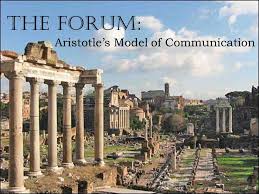Thoughts on Reaction Time – Mark Weiss, AZ
After Happy Hour a couple of weeks ago I’ve been thinking about the term that we used to describe the period of time between stimulus and response. After a little bit of searching I found two distinctly different terms, plus a lot of confusing choices. The two most clear terms were: Reaction Time, and Simple Reaction Time. Simple Reaction Time is less common, but is what I think best describes what we use in our curricula. Simple Reaction Time does not include delays or decision making. SRT is what occurs when the stimulus is know and expected, AND the proper response is also known. i.e. “When the red light turns on, press the black button.” A not far off real-world application is what a drag racer does. When the light turns green, hit the gas. The subject knows what is going to happen, very closely when it will happen, and knows (and has practiced) the exact action that will be taken. In drag racing, perfect reaction time is often considered to be 0.4 seconds.

With the more common, “Reaction Time” term. I found that our complete mental and physical response time is involved. The subject must interpret the stimulus, make a decision regarding the action to take, then start that action. In RT testing, the subject still knows that something is going to happen, but not exactly what the stimulus will be. They know that they will have a choice of actions to take, but will still need to make that decision in the moment. They will probably have practiced the actions, but will not be able to prepare (much) because they don’t know exactly what they’ll need to do. This is most like real world riding. The aware and alert rider stays attentive because they know that something is eventually going to happen. They are practiced because they know that they may be called on to perform without preparation time. They have 360 degree awareness because they recognize that they will have minimal time to make an informed choice and carry it out.
It is my opinion that during the Exercise 8 Demonstration, we are using Simple Reaction Time. Because there are so many variables involved with common “Reaction Time”, attentiveness, distraction, interpretation, practice, it is really impractical for us to try to create a demonstration that could accurately portray the whole process. However, with Simple Reaction Time, we are able to illustrate at least that component of Reaction Time and how even just that one minimal part has a profound effect on Total Stopping Distance.
Perhaps, Perception/Decision, Action, Braking, makes a better description, and in X.8, we are only demonstrating Action and Braking.
You can add replies to Marks’s thoughts on the Rider Choices Forum..
https://www.riderchoices.com/forum/ridercoach-general-questions/thining/#post-137







